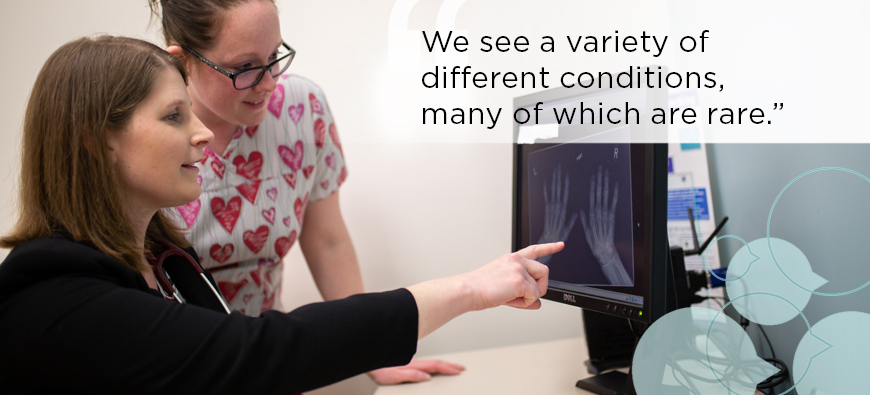
Introducing… a rheumatologist
Dr. Kim Legault is a rheumatologist based at Hamilton Health Sciences’ (HHS) Juravinski Hospital, Hamilton General Hospital and McMaster University Medical Centre. She has been with HHS for six years and is also an assistant professor and Fellow of the Royal College of Physicians of Canada.
What do you love most about your role?
The two things I love most about my job are 1) my patients and 2) the sleuthing involved in diagnosing many rheumatological conditions. Most of the conditions that rheumatologists see don’t have one blood test or one X-ray finding that determines the diagnosis. Many are diagnosed only after taking several different factors into account, including the patient’s history, their physical examination findings, laboratory and imaging studies. Sometimes it is only over time conditions can be diagnosed with some certainty, and sometimes not at all. I find this process fascinating, and because of this, no day is ever boring.
I love the sleuthing involved in diagnosing many conditions.
What do you find challenging?
The most challenging thing about my role is when my patients have conditions or symptoms that are difficult to treat. There have been some advances in rheumatology that have been revolutionary over the last few decades. The biological therapies developed for rheumatoid arthritis dramatically changed the course of the disease and quality of life for patients with this diagnosis. However, there remain many conditions without “disease-modifying” therapies, such as the common condition osteoarthritis. Many patients have chronic pain and/or functional impairment due to these conditions, sometimes with limited management options available.
Describe a typical day.
Most of my days are spent providing patient care at one of our outpatient departments. I see new patient consults, follow-up appointments, and perform procedures, particularly joint injections. My areas of expertise are inflammatory arthritis and connective tissue diseases such as systemic lupus erythematosus (SLE). I usually have a medical student or resident physician seeing patients alongside me. We also recruit patients to take part in studies, such as our nationwide database for patients with SLE, during clinical days. On my non-clinical days I am typically teaching resident physicians or working on research studies.
The reason I work at HHS is because of the culture of collegiality and respect.
Tell us about your most gratifying experience at HHS.
I don’t think I can identify one particular experience. I experience gratifying interactions every day with the clinic, nursing and allied health staff, as well as my physician colleagues. The reason I work at HHS is because of the culture of collegiality and respect we have in this organization. Everyone works together to care for patients as carefully and efficiently as possible while being pleasant and positive with each other.
What’s one thing people would be surprised to learn about your role?
There are many people who don’t really know what types of diseases a rheumatologist manages. This is probably because we see a wide variety of different conditions, many of which are fairly rare. We see various diseases of joints—mechanical conditions like osteoarthritis, though many rheumatologists focus primarily on inflammatory or autoimmune diseases. Some of these conditions predominantly involve joints though some of them involve multiple different organs, such as in SLE. Some only rarely affect the joints but more commonly affect other organs, such as the inflammatory blood vessel conditions grouped under the term “vasculitis.”
Rheumatologists see a variety of patients across different age groups for many different types of conditions, some of which we treat with pain medications and procedures like joint injections. And some we manage with immune-modulating medications. Rheumatology is a broad field with many different conditions within its scope.
